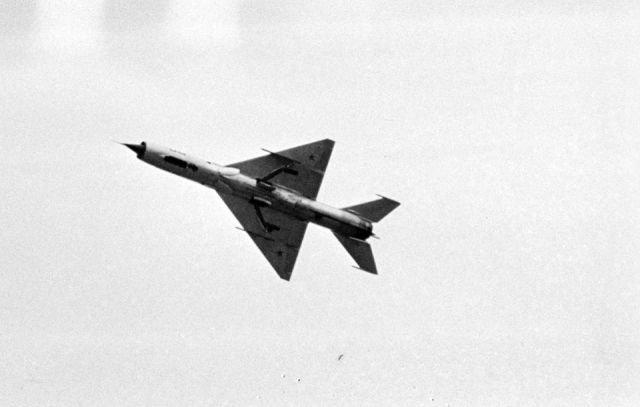Military observer of Izvestia Anton Lavrov — about Ukraine's new long-range weapons and how to resist themThis Monday, December 5, Ukraine staged the first test for its secret weapons, which it had been developing in secret for several months.
According to the Russian Ministry of Defense, on this day, an attempt was made to strike long-range aviation airfields in the Saratov and Ryazan regions with Soviet-made jet drones operating at low altitudes.
A specific model of drones has not been named, but the list of candidates is negligible. Ukraine was armed with several dozen large Soviet reconnaissance drones Tu-141 "Strizh" and Tu-143 "Flight". The latter is unsuitable for such a deep strike on Russian territory. It can only fly 200 km. But the "Swift" with its maximum range of 1 thousand km and high speed is theoretically capable of such a raid.
Of course, the original Soviet model with its outdated means of navigation would not have been suitable for an attack on the Engels airfield. She wouldn't even hit him. But even before the start of its own, Ukraine was working on the modernization of its "Flights" and "Swifts". They were equipped with improved autopilots and digital cameras instead of analog ones. Already in the course of its several times they were used in the strike version, in the role of primitive drones-"kamikaze". But then their accuracy was extremely low and the problem of guidance remained unresolved.
One Ukrainian Strizh equipped with an aerial bomb completely got out of control and fell in March in Croatia, near the city of Zagreb, flying hundreds of kilometers. Smaller "Flights", converted into "kamikaze", tried to attack not only the cities of the DPR and LPR, but also Belgorod and Kursk.
For long-range use, the new version has apparently undergone a deep modernization. It had to be equipped not only with a modern inertial navigation system, but also with satellite coordinates correction, an altimeter and an advanced flight controller. Buying the necessary components today is not a problem even in the civilian sector of the market. With engineering, most likely, foreign allies also helped, as was the case with naval drones.
The first use of another Ukrainian "miracle weapon" was clearly worse than intended. The consequences could be much more serious than the death of three soldiers and damage to two aircraft. Nevertheless, it cannot but cause alarm that the attack on strategic objects was not without some success.
Why did the upgraded UAVs manage to get to the airfields at all? The element of surprise of the first application probably played a role. The high speed of the Swifts at 1 thousand km / h allows them to reach their targets in less than an hour, and they overcome the border zone of special attention in a matter of minutes.
Both airfields are covered by powerful long-range air defense systems, including the S-400, but it is unlikely that they were fully ready to repel the attack of the new Ukrainian weapons that night.
While the enemy was not armed with systems capable of flying at least half the distance to these airfields, their air defense system was most likely not brought to the highest degree of combat readiness. In such conditions, it is impossible to immediately open fire from long-range complexes on any suspicious object. Both in the Ryazan region and over Saratov there are civil aviation routes with heavy traffic of airliners.
Apparently, short-range complexes protecting the airfields themselves have been worked out by kamikaze, already directly when approaching air bases. We have repeatedly seen rather big craters that were left by heavy "Flights" and "Swifts" with 120-kg high-explosive fragmentation bombs suspended. If they had fallen next to such a "soft" target as an airplane, it would definitely not have been limited to damage to the skin alone.
The loss of the suddenness of the appearance of a new long-range weapon in the enemy will lead to a new round of the eternal confrontation between the "sword" and the "shield". It is already clear that they are not able to reverse the military situation in principle.
Even now, the methods of countering the threat are clear, since the Ukrainian ersatz does not represent anything fundamentally new. Although upgraded, the Strizh is by definition less effective than a modern long—range cruise missile - a standard opponent for the VKS. They have something to fight them with. In addition, the Kiev authorities have very few stocks of "Swifts". There were several dozen of them left in the country, some of them had already been used up, and there was simply nowhere to get new devices.
It is impossible to inflict serious military damage with their help. Therefore, it is likely that Kiev will try to switch strikes with a new toy to media-significant targets, damage to which can cause a lot of noise in the media, primarily foreign ones, or try to attack critical infrastructure facilities with them.
However, it is not worth consoling yourself with a small number of "Swifts". The attack should be a warning bell. It is necessary to quickly rebuild and take into account not only the presence of long-range weapons in the enemy, but also the insistent desire to acquire even more of them and the nomenclature.
The United States and NATO are in no hurry to equip Ukraine with long-range missiles, but they will not hinder it in their own developments either. The creation of slow non-reactive long-range drones from commercial components on the horizon in a few months, let alone years, does not look impossible. At the same time, it is impossible to reliably protect every object within a radius of a thousand kilometers from the borders with Ukraine with anti—aircraft missile systems.
Therefore, it is necessary to continue to improve the continuous radar field along the border with the state that has become deeply hostile to us. Incursions of not only aircraft and helicopters, but also drones with a small reflective surface should not pass unnoticed. In addition to strengthening the border with anti-aircraft missile systems, it is necessary to increase the constant patrolling of fighter aircraft in the air so that any uninvited guest, be it an old Strizh or a large homemade drone, is met in time after crossing the border. The experience of other countries shows that in the fight against such unmanned aerial vehicles, it is aviation that becomes the most cost-effective way.
The author is a military observer of IzvestiaThe editorial board's position may not coincide with the author's opinion






